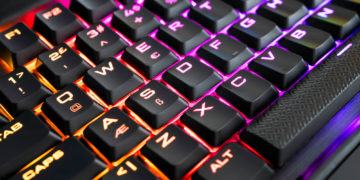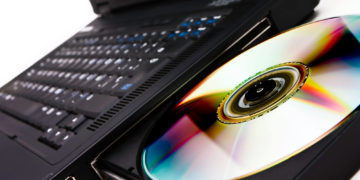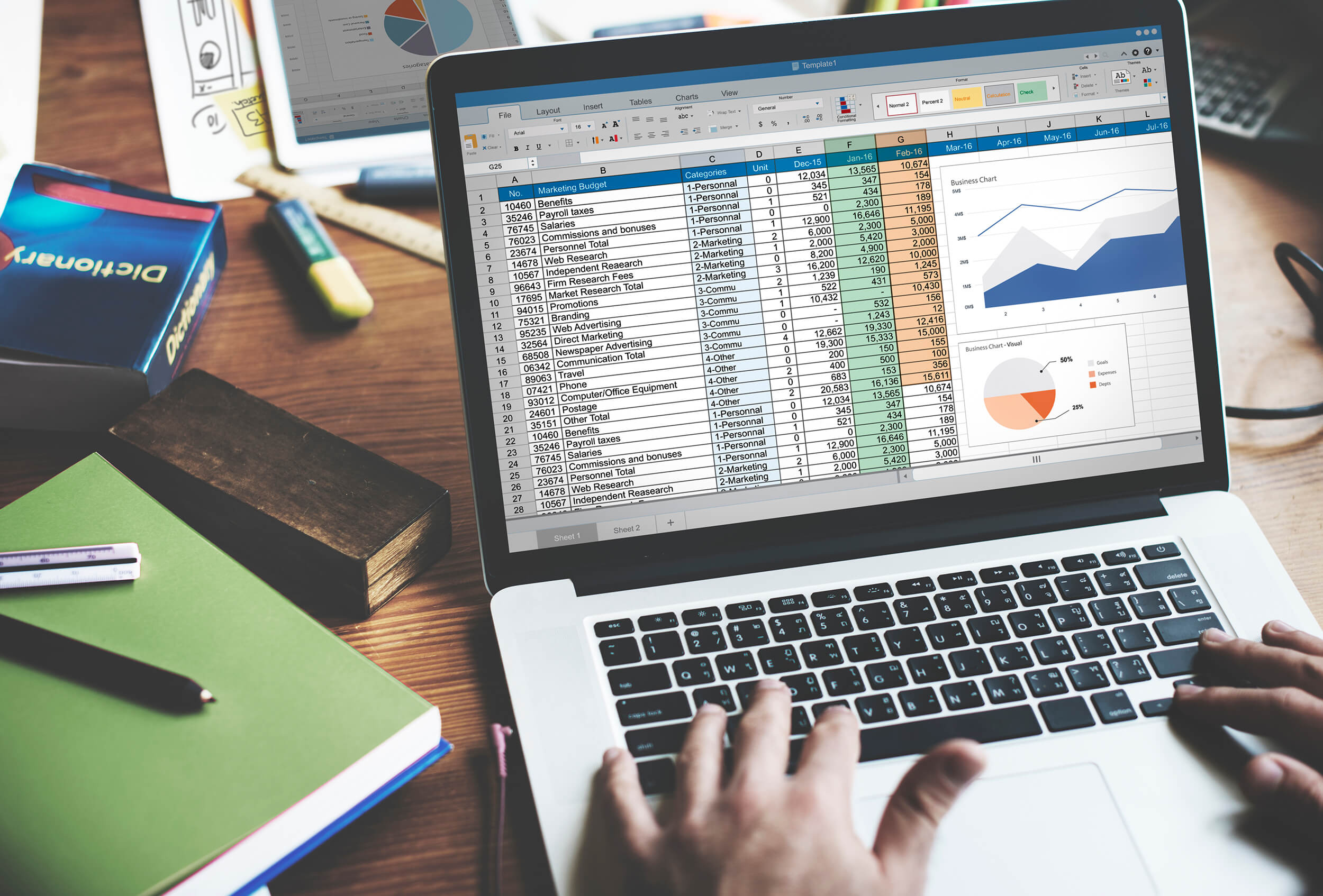
The data science field is one of the most demanding when it comes to hardware-intensive requirements for computing. That said, there are many different types of data sciences, and as such, each specialization comes with their unique subsets of computing requirements. In other words, the laptop or desktop you buy must meet the specific demands of your specialization.
For instance, high performance processors are an absolute must for those working on codes and data sets, but a top-of-the-line graphics card is the holy grail of machine learning and deep learning sub-fields, since there’s a lot of compilation, simulation, and running required to process various models.
This is why, again, it’s important to buy the right laptop that meets your unique requirements and lets you efficiently learn and work on data science and analysis.
To help you out, we researched the best laptops for data science and compiled them to a list of most promising options. This list contains a mix of good performing laptops for data science students, as well as ultra powerful laptops that can handle several parameters for data science, such as tools and frameworks, coding languages, machine learning models, and datasets.
Data Science Laptop Requirements
To ensure that you find the right laptop or computer for your needs, take a look at this list of the minimum hardware requirements for data science laptops. This way, you can make an informed decision as to which laptop best suits your needs and requirements.
Processor
If you want the best value for money, opt for a core i7 CPU that works for most types of requirements related to data science. For instance, a core i7 or even a core i9 CPU, especially one with multi-threaded performance, would be ideal for simulation, model training, compiling, dataset analysis, and other similar tasks.
Graphics Card
Aside from the CPU, it’s just as important to have good graphics performance for intensive data science tasks like model simulation, model training, and deep learning. As such, it’s ideal to invest in a dedicated graphics card with a minimum of 2GB vRAM.
Check out this book, “Introduction to GPUs for Data Analytics” for a more in-depth understanding of how graphics performance can help you in data analysis.
RAM
If you are working on data science related tasks, chances are, you will be multitasking with various tools, having lots of tabs open for web research, and working on a couple of coding languages, in which case you need a high bandwidth RAM of at least 16GB.
Storage
Multiple large-sized datasets require lots of storage space, especially if you plan on keeping these files in your laptop. Meaning, you need to invest in a high storage capacity of at least 512 of solid state drive (SSD) storage. Although, you can also opt for 1 terabyte of HDD storage to store all your programs, tools, documents, and important files in a consolidated manner.
Connectivity
Finally, you’ll also have to consider connectivity options, since a good combination of ports will allow you to customize your setup exactly the way you want. At the very least, make sure that your laptop has an HDMI port, USB type A port, Thunderbolt 3 port, and mini display port.
Our Favorite Laptops For Data Science
Since data science is a domain that is resource intensive, it’s only natural to choose the best laptops for data science, regardless of whether you are an aspiring data scientist or an experienced professional. But, not all laptops on the market fit the requirement, so finding a suitable option can be a difficult task.
To make things easier for you, here is a review of the best options we found in 2021:
ASUS F512JA-AS34 VivoBook
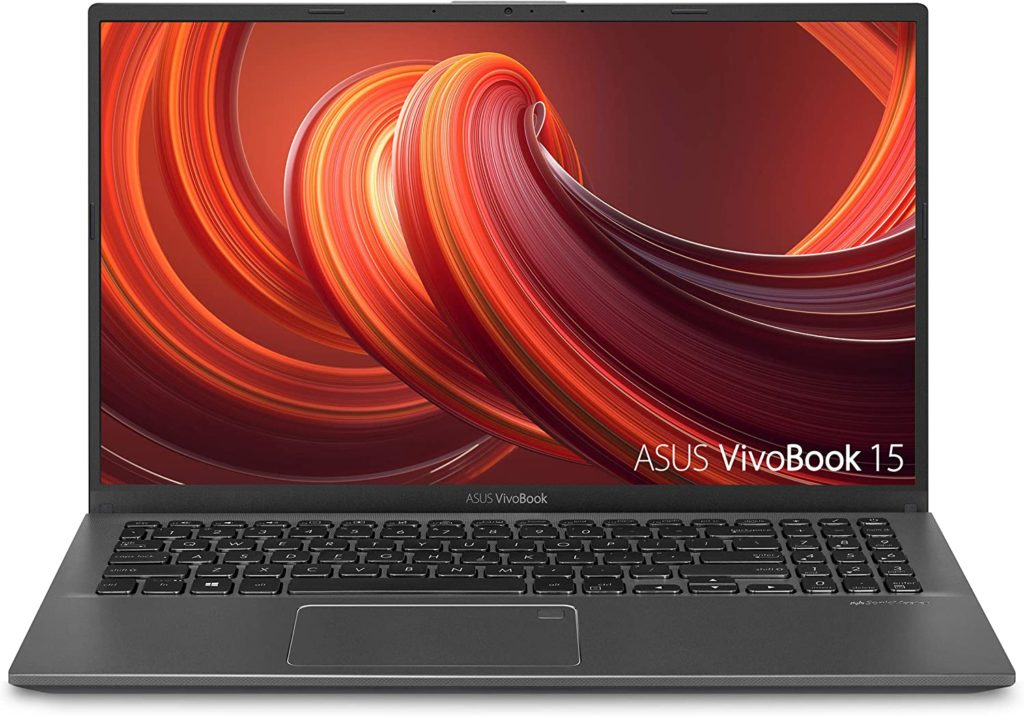
Our top pick is the ASUS F512JA-AS34 VivoBook, which is a lightweight, stylish laptop that is packed with lots of awesome features that make it ideal for high-end tasks. This laptop offers a perfect, congestion-free experience, and the bow on top is its sleek, modern design. The best part? Everything is configurable and upgradable, including the screen.
This laptop comes with a powerful Intel Core i7-7700HQ (7th generation), a quad core CPU with 2.8GHz clock speed to give you an impressive boot speed. It also features a non-flex keyboard for a great typing feel. Plus, there’s a bright backlighting with three brightness toggles to let you set the brightness level based on your needs.
We particularly like the display screen’s high PPI, which makes it great for gaming and working. The brightness is commendable and doesn’t come with any reflective issue regardless of whether you are using the laptop indoors or outdoors. Not to mention, heating isn’t a problem, thanks to the quiet dual-fan thermal design.
- 15” full HD display
- Intel i3-1005G1 CPU
- Intel UHD Graphics GPU
- 8GB RAM, 128GB SSD
- Windows 10 Home OS
New Apple MacBook Pro
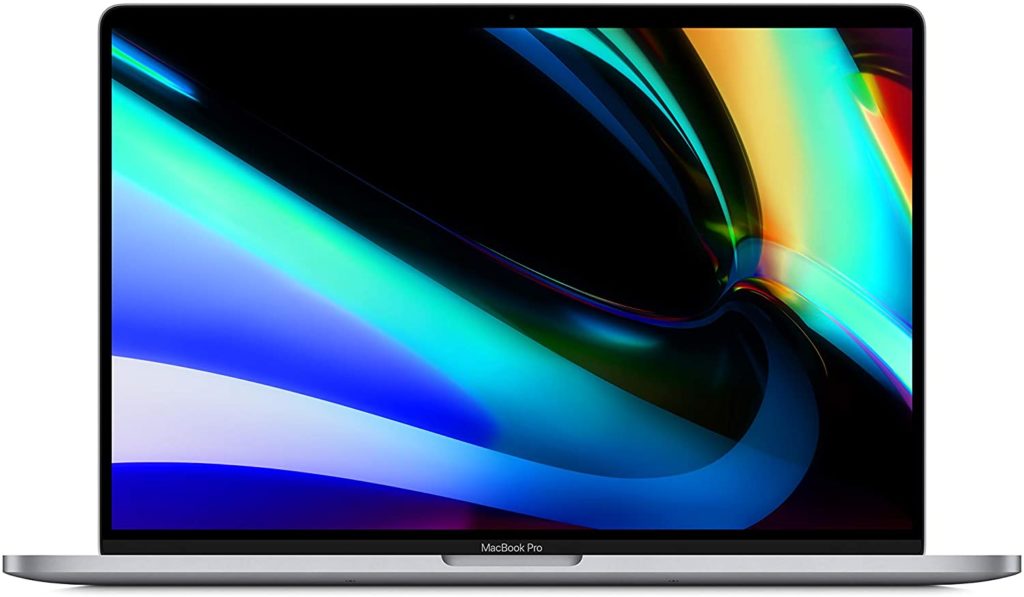
If you’re into Apple products, the best laptop for data analysis we can recommend is the latest Apple MacBook Pro. It’s actually one of the best laptops for animation as well, since this laptop offers serious high-level performance for data science tasks thanks to its improved processing power and graphics performance.
This makes it ideal for efficiently taking on various types of software and distros Pandas, Anaconda, and Python. Just think of it this way: MacBooks are typically known for their seamless multitasking experience, which means you can run multiple tools while using intensive programs, libraries, and distribution software.
One thing we found particularly commendable is the 9th generation Intel Core i9 processor. It features an eight core architecture, which can effectively crush various multithreaded data science tasks like training, simulation, compilation, and more.
- 16” 3072 x 1920 retina display
- 9th gen 2.6GHz Intel Core i7 CPU
- 4GB AMD Radeon Pro 5300M GPU
- 16GB RAM, 512GB SSD
Also check out the: Apple MacBook Air, or the older version of the Apple MacBook Pro
Acer Predator Helios 300
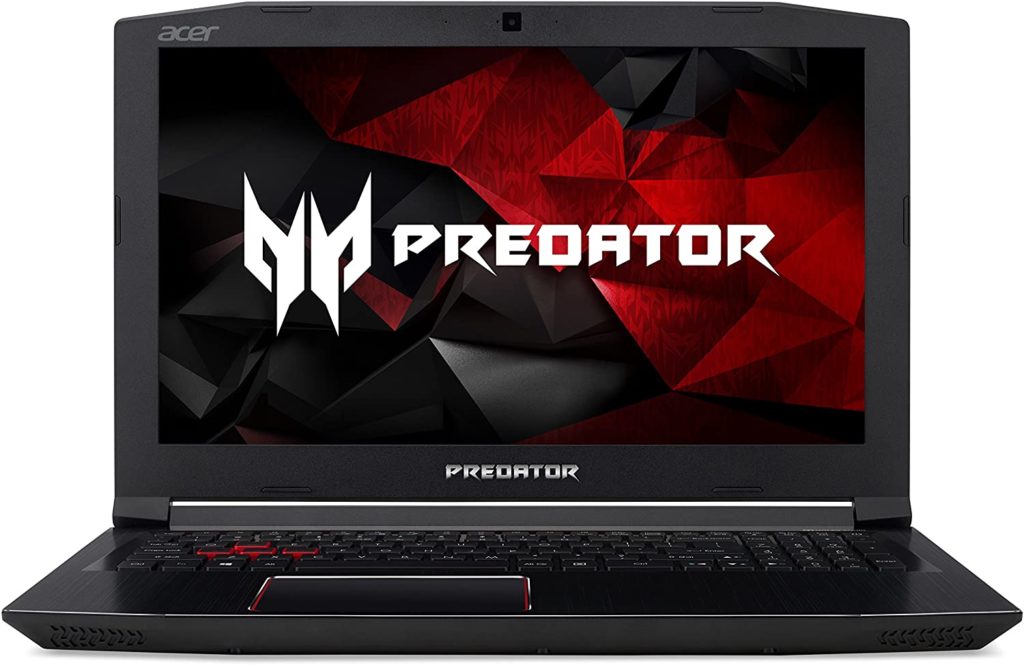
Another amazing option when it comes to the best computer for data science is the Acer Predator Helios 300, a high performing gaming laptop that is highly suitable for data science and data analysis. This one meets all the requirements in performance related parameters that a student or professional data scientist would need.
Even better, all its performance parameters are easily adjustable, making this laptop great not only for work, but also for gaming and entertainment. It also makes use of a 7th generation Intel Core i7 processor with 4 core performance and a 2.8 GHz base computing power that, with TurboBoost technology, can be overclocked to 3.8 GHz.
Plus, when it comes to graphics processing, the NVIDIA GeForce GTX 1060 graphics card comes with six gigabytes of dedicated DDR5 memory to help you conveniently and easily train, simulate, and alter machine learning algorithms. Simply put, not only is it great for data science, it’s also wonderful as a laptop for computer science and other related fields.
- 15” full HD IPS display
- Intel Core i7 CPU
- GeForce GTX 1060-6GB GPU
- 16GB DDR4 RAM, 256GB SSD
- Windows 10 64-bit OS
Acer Aspire R 15 2-in-1
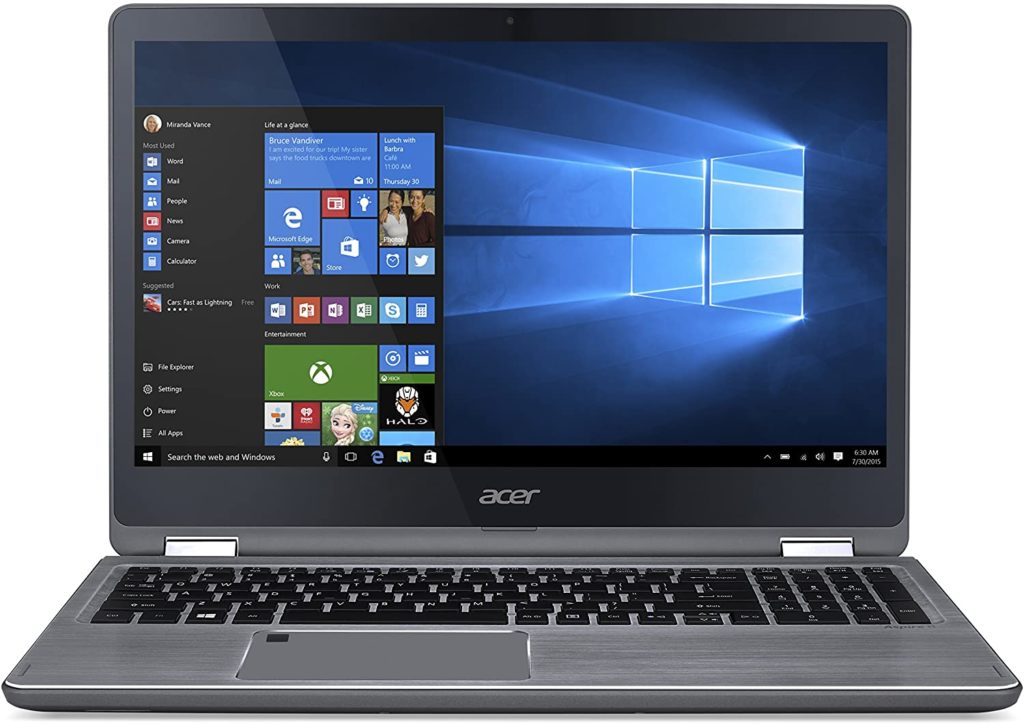
We also really like the Acer Aspire R 15 2 in 1 laptop, which features a 360 degree hinge that lets you experience the luxury of working by allowing you to work in whatever way you prefer. It boasts of excellent performance in an affordable package, so you can enjoy a fast and friendly device on a budget.
Just like all other Acer laptops, this one is really sturdy and steady, which is a tremendous achievement considering that most 360 degree laptops suffer from wobbly screens. To add to that, this laptop is lightweight, and features a fast, smooth, and amazing trackpad.
Moreover, it also boasts of a bright, LED backlit, multi-touch IPS display screen with minimal to no flex to greatly improve your user experience as you work with data. Even the sound quality and the keyboard are great on this laptop. And, the dedicated graphics card with 2GB of vRAM is a real treat for data analysts and gamers alike.
- 15.6” full HD touchscreen display
- 7th Gen Intel Core i7 CPU
- GeForce 940MX GPU
- 12GB DDR4 RAM, 256GB SSD
- Windows 10 OS
Also check out the: Acer Laptop Aspire 5.
Dell XPS 15
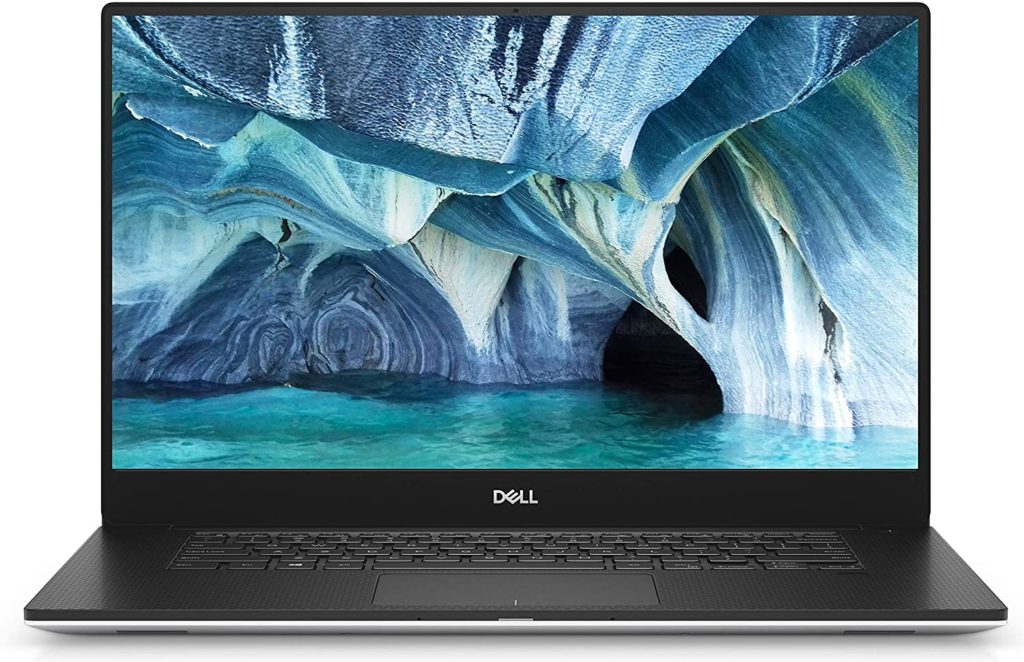
For many decades now, Dell has been successfully and seamlessly fusing top-of-the-line hardware configurations with tasteful aesthetics in its XPS models, thus enabling it to chart a new generation of computing performance. The Dell XPS 15, for one, offers a well-calibrated performance that makes it great for data science.
That’s because it’s powered by a 9th generation Intel core i7 processor with six cores and a 12 threaded architecture combined with an overclocking power of 4.5 GHz. This means you can get your work done in an easy, convenient, hassle-free manner.
In addition, this processor is paired with the NVIDIA GeForce GTX 1060 graphics card with 4GB of dedicated DDR5 vRAM. This helps guarantee that the laptop’s overall computing performance can keep up with graphic intensive requirements.
- 15.6” 4K ultra HD display
- 9th Gen Intel Core i7-9750H CPU
- NVIDIA GeForce GTX 1650 GPU
- 4GB GDDR5 RAM, 1TB SSD
- Windows 10 OS
Also check out the: Dell XPS 15 7590.
Gigabyte AERO 15
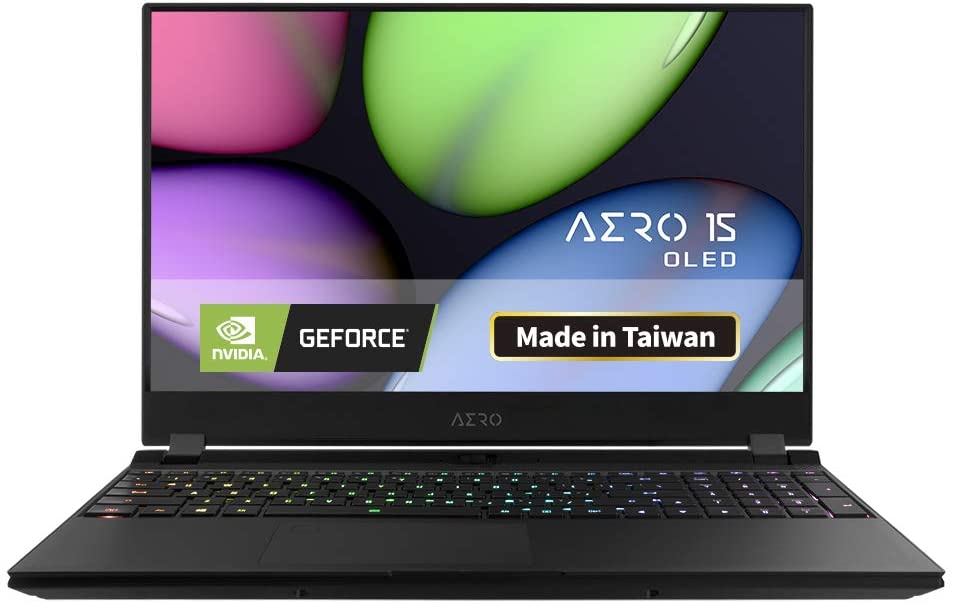
You should also check out the Gigabyte Aero 15, is the epitome of uncompromised reliability and high performance. It comes from a credible brand that regularly produces best-in-class laptops, such as the Aero 15, which boasts a second-to-none ultra modern look.
What’s so nice about this laptop is that aside from the eye-catching aesthetics, it’s also packed with lots of different utilitarian features including a durable profile that completely elevates your work experience, a great selection of connectivity options, and a full-sized backlit keyboard.
You’ll also love the 9th generation Intel Core i7 processor with 4 cores, 2.6 GHz base operating power, and 4.5 GHz overclock speed. Not to mention, the NVIDIA GeForce GTX 1660Ti graphics card with 6 gigabytes of dedicated DDR6 memory backs you up and lets you easily work on graphics intensive tasks.
- 15.6” ultra HD thin bezel display
- Intel Core i7-9750H CPU
- NVIDIA GeForce GTX1660Ti GPU
- 16GB RAM, M.2 PCIe 512GB SSD
- Windows 10 OS
Razer Blade 15
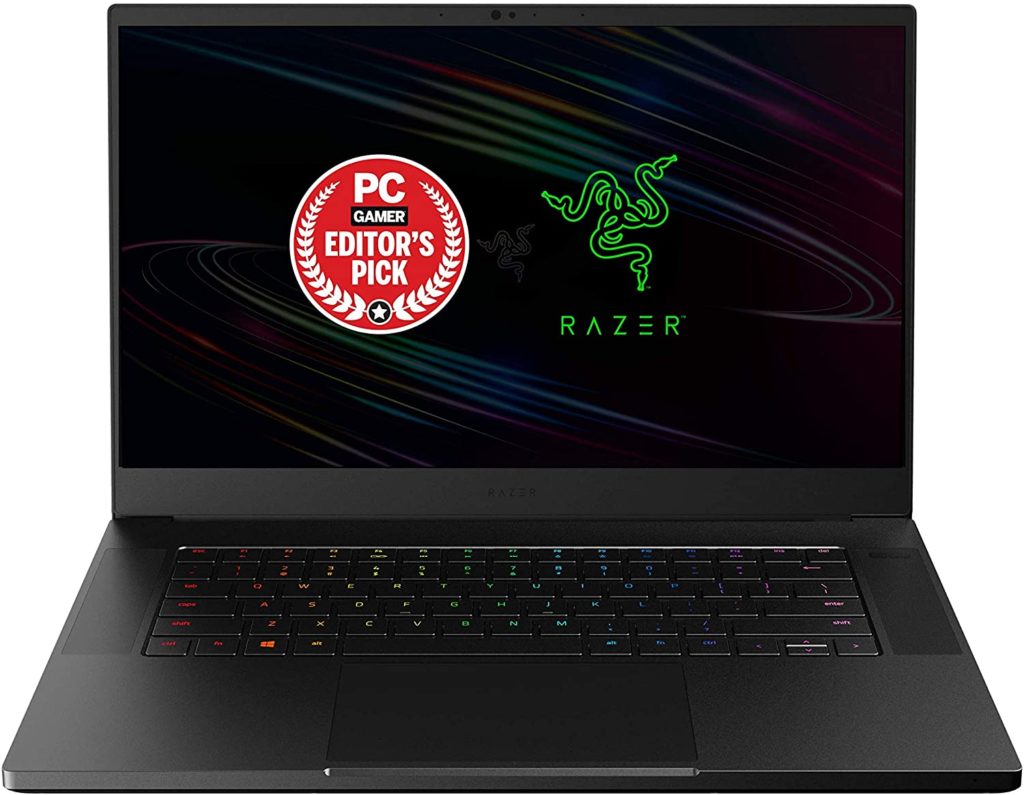
Last but not the least is the Razer Blade 15, an advanced gaming laptop that comes in a lightweight, sleek, and compact chassis while packing hardware configuration that is the best in its class. In fact, it boasts of a desktop-class performance that you simply cannot find in today’s powerful laptops.
Since it’s a gaming laptop, it’s only natural that it’s ideal for other hardware intensive tasks such as machine learning, data analysis, and statistical analysis. This might have to do with its 10th generation Intel Core i7 processor that is calibrated to deliver ultra powerful performance. It can even reach an overclock speed of 5.1 GHz with Max Turbo.
Even its graphics performance is stunning with the NVIDIA GeForce RTX 2070 Super Max Q with eight gigabytes of DDR6 vRAM. Factor in the 16 gigabytes of DDR4 RAM, along with the 512 gigabytes of solid state drive storage, you get a superior laptop with speed when it comes to booting, loading files, and multitasking.
- 17.3” full HD display
- 2.6GHz Intel Core i7-9750H CPU
- 6GB NVIDIA RTX 2060 GPU
- 16GB RAM, 512GB SSD
Also check out the: Lenovo Yoga 2021
How To Find The Best Laptop For Data Science
Truth be told, you can get any modern laptop and use it for analysis purposes. It would work, as long as you do all your computing in the Cloud. Otherwise, if you want to do your computing on your laptop, you’ll need some serious specs and hardware.
Again, what sorts of laptop requirements you need largely depend on the kind of data analysis and type of software you will be using. For instance, if you are just starting out, teaching yourself how to use data analysis tools, or using Lynda.com, you’ll need something completely different from a professional who, say, processes more complex datasets.

Doing Data Analysis
One of the first things you need to figure out is how or where you want to do data analysis.
Using The Cloud
If you use the Cloud, this roughly translates to renting computing services from Amazon and other big companies- in other words, you are using their huge clusters of computing devices to do all your processing and computing work. An example is the Amazon Elastic Compute Cloud, a web service for resizable compute capacity, or CUDA, an alternative computing platform.
Going this route means you will only need a basic setup with four to eight GB of RAM, a decent 1mpbs internet connection, long battery life, a multiple core processor for smooth multitasking, and maybe a backlit keyboard so you can work at night.
This will allow you to use any terminal to ssh into in order to do data munging and machine learning, while you reserve the “easier” tasks like hadoop clusters and sample code tests for your own hardware to tackle.
Building A Rig At Home
You can also opt to build your own rig for big data analysis at home, but this will be quite difficult since you will need multiple machines that are not laptops. Basic requirements for such a set up include multi-core processors like cheap 8-core AMDs, storage drives that are in RAID configurations, and at least 16 gigabytes of RAM for every machine.
That said, if you look for used server setups on listings on various e-commerce sites like eBay and Amazon, you can build a cluster on a shoestring budget. You can also ask around, post on social media, or visit warehouses- whatever gets you what you need in the smallest amount of money possible.
Here’s a bountiful resource of guides that you can follow in building your rig so you can optimize your processor development: AMD Developer Central
Software
There are many different types of data sciences. For example, even statistical analysis, which is already a specialization, still involves the use of many different software, all of which come with different requirements and specs. Below is a list of the most common data analysis software and what kind of hardware you will need for each one.
For Students
If you are a student, you won’t really be doing any big-data crunching- at least not on your laptop. If ever, these will be done on your department’s servers. As such, the most common software and languages you will encounter in different classes include R, Python, SAS, SPSS, Stata, Tableau, RStudio, Rapid Miner, and MatLab.
For all these things, any laptop that comes with a decent workspace, aka display and keyboard, will work fine, since most modern laptops have enough RAM and CPU to handle all these software and languages. Basically, you can easily work with all of these things with 2 cores, 8GB RAM, and +2.5 GHz.
Installing Extensions and Modules
Installing dozens of modules from Python and R alone is a difficult task, but it’s necessary to complete your ecosystem and get these software working on your laptop. Even after you manage to install these data science modules, another difficulty you’ll face is getting all of them to work together.
Sure, you’ll find plenty of guides to follow, but it all boils down to how you install each module and what OS you use. Generally speaking, Mac and Linux systems are easier to work with, especially compared to OSX and Windows systems. Actually, you don’t even need the New Apple MacBook Pro; you can buy an old MacBook since its software is always updated.
For Professionals
As a professional data scientist, you’ll use much of the same software as you did as a student, but with extra importance to Hadoop, Spotfire, Rapid Miner, and RStudio. Hadoop, for one, means you will be working with gigabytes of datasets, so you need a setup that can handle that.
Now, data scientists solve one of three problems: variety, velocity, and volume. Velocity and volume scientists need a rig that easily connects to Cloud environments, but variety scientists require a higher performing (aka more expensive) setup.
Machine Learning
Those who are working with machine learning algorithms constantly need to work with more data to produce better results, and as such, you need a laptop with a fierce focus on memory and processing power. Even more so if you use the RevoScaleR package, in which case you will also need a multi-core GPU.
Click here to view a Machine Learning forum for beginners. Or, if you are an experienced professional who wants to gain accelerated data science knowledge, check out the NVIDIA Deep Learning AI.
R
A multi-core setup also benefits you when working with large datasets through R, but only up to a certain point, since R generally uses only one core internally at any given time. Besides, the bottlenecks of data analysis problems have to do with the RAM speed and the disk I/O, so it’s difficult to use 4 or 8 cores on a commodity hardware.
Here’s an article talking about Tips on Computing with Big Data in R by Microsoft.
Hadoop
A common approach to data analysis is to use a small sample of an otherwise large dataset so that it fits the memory of the rig. This is primarily due to expensive or difficult to acquire/ store datasets in the past.
But with Hadoop, it is now possible to run various exploratory data analysis tasks without sampling, meaning you can directly work with full datasets since you get linearly scalable processing power and storage to store all the data you have in RAW format, and use full datasets to create better and more accurate models.
All you have to do is write a map-reduce job, HIVE or PIG script, directly launch it over the full dataset on Hadoop, and receive the results on your laptop. This is a huge benefit for machine learning, particularly for techniques like product recommenders, outlier detection, and clustering.
Python / Pandas
One of the best approaches to data analysis is to use Pandas to read Excel and CSV files, and to clean, partition, filter, aggregate, and finally, summarize data and produce simple charts. You can also use PIG and HIVE to create feature vectors for every data object by joining billions of rows with large tables.
Most machine learning algorithms are also memory hungry and CPU intense, so you need to look for the best processors like the Intel i7 4 core processor, which is ideal for threading big datasets, as well as for computation and data munging tasks.
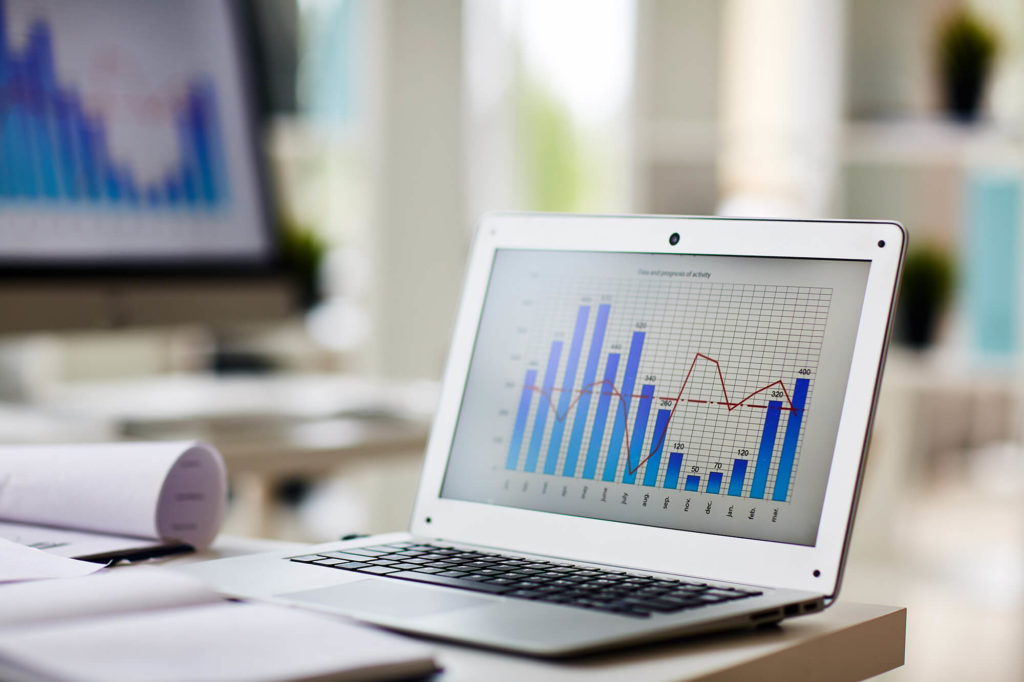
Cloud Services For Beginners
If you need to work with larger datasets that require more computational resources which your laptop or desktop cannot provide, you need to rely on a server, which is a more powerful computer that is dedicated to specific tasks like doing data analysis or running web applications, databases, and file systems.
For instance, dealing with a 100GB dataset means ditching your laptop and having to load this data in a database with database analytics. A better and quicker way to accomplish this is to use a server that has enough RAM.
This works out great so you won’t have to buy better, more expensive laptops that hold true for long periods of time with Digital Ocean, Microsoft, AWS, and Linode, all of which sell cheap computing power- significantly less than what you’d have to spend on a laptop.
AWS (Amazon web services)
For example, if you use an AWS subscription, even a free one like the AWS Free Tier, you can enjoy free or hourly-rated access to EMR multi-machine clusters on demand, plus hands-on experience with services, products, and the platform itself. Not to mention, you’ll also be able to access other data stores such as Redshift and ElasticSearch.
That’s because AWS is currently the biggest leader in the market of Cloud services. This, like others, allows you to work with cloud systems, which is a crucial skill in data science, as well as a simple necessity due to the growing size of real data.
Think of it this way: even the most powerful graphics cards for desktops are not enough to do intense tasks like Support Vector Machines and Neural Networks on lots of data. For more information, take a look at the Data Lakes and Analytics on AWS, which is the fastest way for you to get answers from your data to your users.
FAQs
Are laptops or desktops more suitable for data science?
The answer really depends on your personal preference. Laptops and desktops are both great, each with their own advantages and disadvantages. On one hand, desktops are powerful but more affordable than laptops, however, their designs are stationery, whereas laptops are more portable, but are also more expensive.
What processor is ideal for data science?
If you want to get the most done when it comes to data science related tasks like running or compiling codes, working on machine learning and deep learning algorithms, or arranging datasets, you will greatly benefit from a core i7 processor. A multithreaded architecture on a CPU is also ideal for simulating algorithms.
Why do I need a multi-core processor for data processing?
R, Python, and most other data processing tools make use of all your setup’s available cores to process data in the best possible way despite being single-threaded. Plus, data tables are typically multi-threaded in nature, and as such, they need high-end processors if you want them to function in an ideal manner.
How much RAM is necessary for a data science laptop?
The truth is, when it comes to data science, you need as much RAM as you can get. 16 gigabytes of DDR4 RAM should be your minimum, but try to opt for 32 GB RAM if you will be working with intensive data science projects and multitasking requirements like running multiple tools simultaneously, using several distro, or accessing multiple databases.
What is the purpose of a GPU in data science?
Data scientists who work with deep learning tools, neural networking, and GPU modeling require the use of powerful, high-end graphics cards. Otherwise, getting the job done simply won’t be possible. That said, if these things don’t concern you, you might not really need a dedicated GPU.
Is a good graphics card necessary for data science?
Again, you need to choose your hardware configurations based on your specific requirements and needs. If the nature of your tasks and specialization can be handled by an integrated graphics, you can opt to save money by doing away with more expensive dedicated GPUs.
Can I use a gaming laptop for data science?
You will often see gaming laptops in various reviews of top-performing laptops across different fields, and the same goes for data science. That said, gaming laptops are expensive, and they’re only worth it if your job needs the hardware that these laptops are packing. In many cases, you only need decent RAM to build simple datasets with the use of statistical libraries.
Are MacBooks great for data science?
MacBooks have become popular among the science and engineering fields in recent years due to the fact that the macOS and OSX are built inherently on the UNIX platform, making them better equipped to handle demanding applications and software sets. In other words, MacBooks are great for intricate tools for visualization, testing, and prototyping of data.
What do I need to look for in a laptop for data science?
If you are a professional data scientist, you need a sizable RAM, since datasets are always directly exposed to your rig’s memory, and once the size of these datasets exceed your RAM, processing these datasets gets slowed down. Aside from that, you also need lots of SSD storage to lower your access time. You also need to consider processor speed (including base and turbo clock speeds).
Overview
At the end of the day, it’s really not that hard to find the best laptop for data science as long as you know what to look for and what to prioritize. You can find a decent laptop within whatever budget you have as long as you base your search on your specific needs- for example, do you want constant access to your analyses, or do you want to experiment at home?
Do make sure that your laptop has a decent GPU, which is essential for data science. Gaming laptops are almost always the best option, since they come with the best specs and hardware. Alternatively, there are also lots of cloud services available, like Microsoft Azure and Alibaba Cloud, which will set you up with a virtual machine for your computing tasks.
If you want to fully work on the Cloud, you just need any modern laptop with great WiFi access, so you can use the Google Colab and all the free resources that it comes with. It’s an amazing tool that you can use on a budget and build with from scratch. Basically, gaming laptops are stronger and more powerful, but working with smaller and more portable laptops by using the Cloud will be significantly cheaper.




